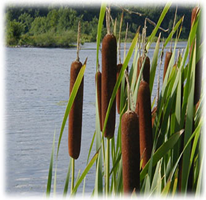Sea Level Reconstructions
Changes in sea level largely control the long term evolution of coastal landforms, and current and future sea-level rise (SLR) threatens coastal populations and infrastructure. Determining how changes in sea level may be linked to climate variability is important in order to project future changes and possibly mitigate socio-economic impacts. To understand the driving mechanisms of sea-level change, develop a basis on which to calibrate sea level and climate models, and provide context for 21st century sea-level change, accurate estimates of sea level in the pre-satellite era are necessary. Where available, good quality tide-gauge data provides direct evidence for recent sea-level accelerations and decelerations and during the 20th century tide-gauges recorded a global rate of sea-level rise of 1.7 to 1.8 mm/yr. This rate of rise is much greater than the long term rate of rise that has been inferred from late Holocene (last 4000 years) geological records. However, the limited number, distribution and short duration of tide-gauges prevent efforts to robustly test climate-sea-level hypotheses and establish driving mechanisms responsible for such changes necessitating the development of high-resolution sea-level records in the pre-satellite era.
Salt marsh communities are intrinsically linked to the magnitude, frequency and duration of tidal inundation and thus geological archives of older marsh surfaces (peat sequences) can be used to reconstruct past sea levels. For example, the zonal distribution of marsh vegetation zones in New England salt marshes is controlled by the tolerance to physical stress (i.e. flood tolerance) and interspecies competition. Cord grass (Spartina alterniflora) exclusively inhabits the low marsh zone between close to mean sea level (MSL) and mean high water (MHW). The high marsh zone is dominated by marsh hay (Spartina patens) and spike grass (Distichlis spicata) and develops within approximately 0.15 m of MHW. Black rush (Juncus gerardi) and marsh elder (Iva frutescens) often dominate the HHM at an elevation of approximately mean highest high water (MHHW). Above MHHW a brackish marsh community composed of grasses (Spartina cynosuroides, Phragmites communis, Panicum virgatum), and sedges (Scirpus americanus, Scirpus robustus) can exist. Extant salt marshes in the northeastern United States have developed in the last 4,000 to 7,000 years, generally keeping pace with moderate rates of sea-level rise. By identifying and dating (with radiocarbon and other techniques) macro and micro fossil assemblages (e.g. forams) these samples can provide information regarding the elevation of past sea level.

